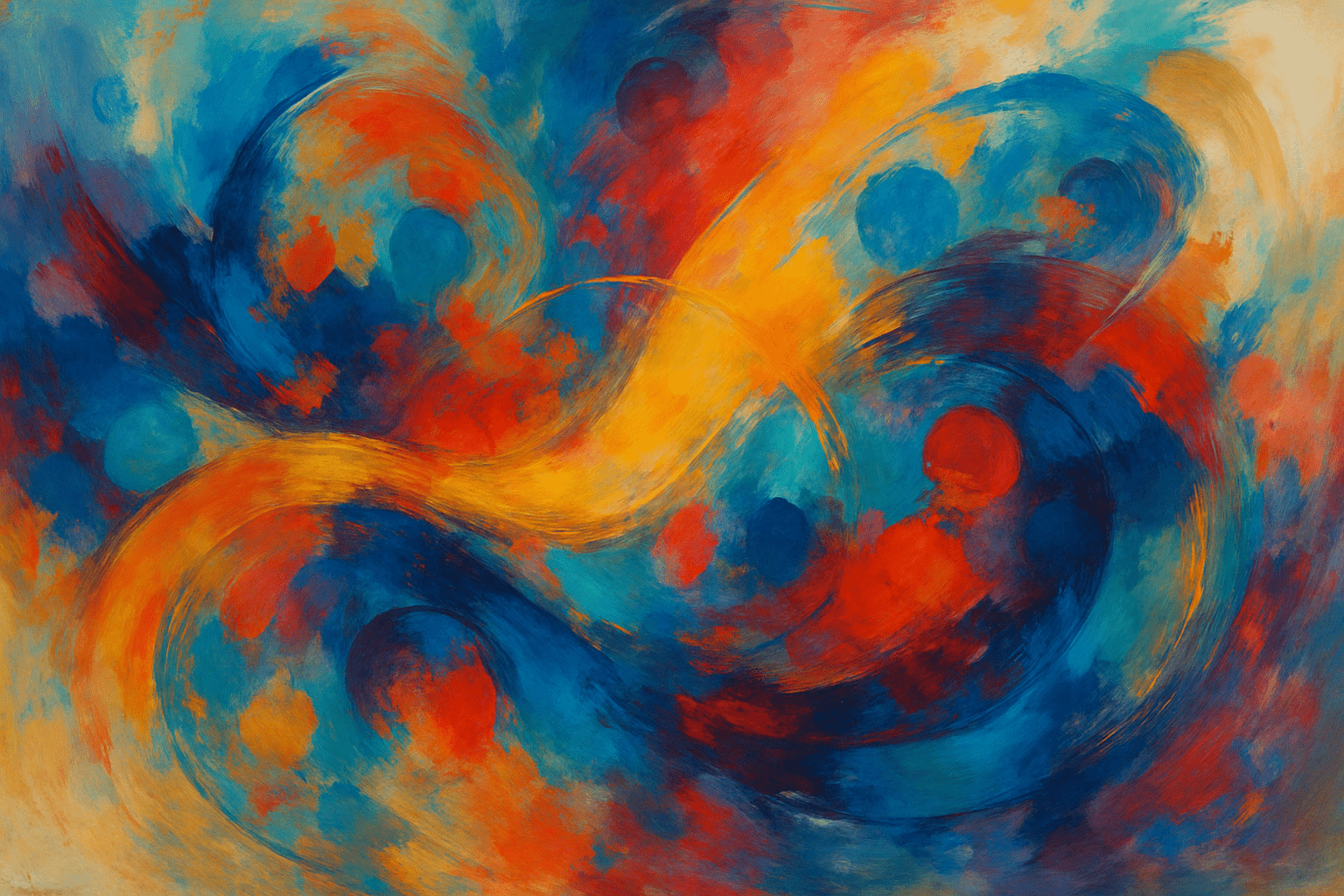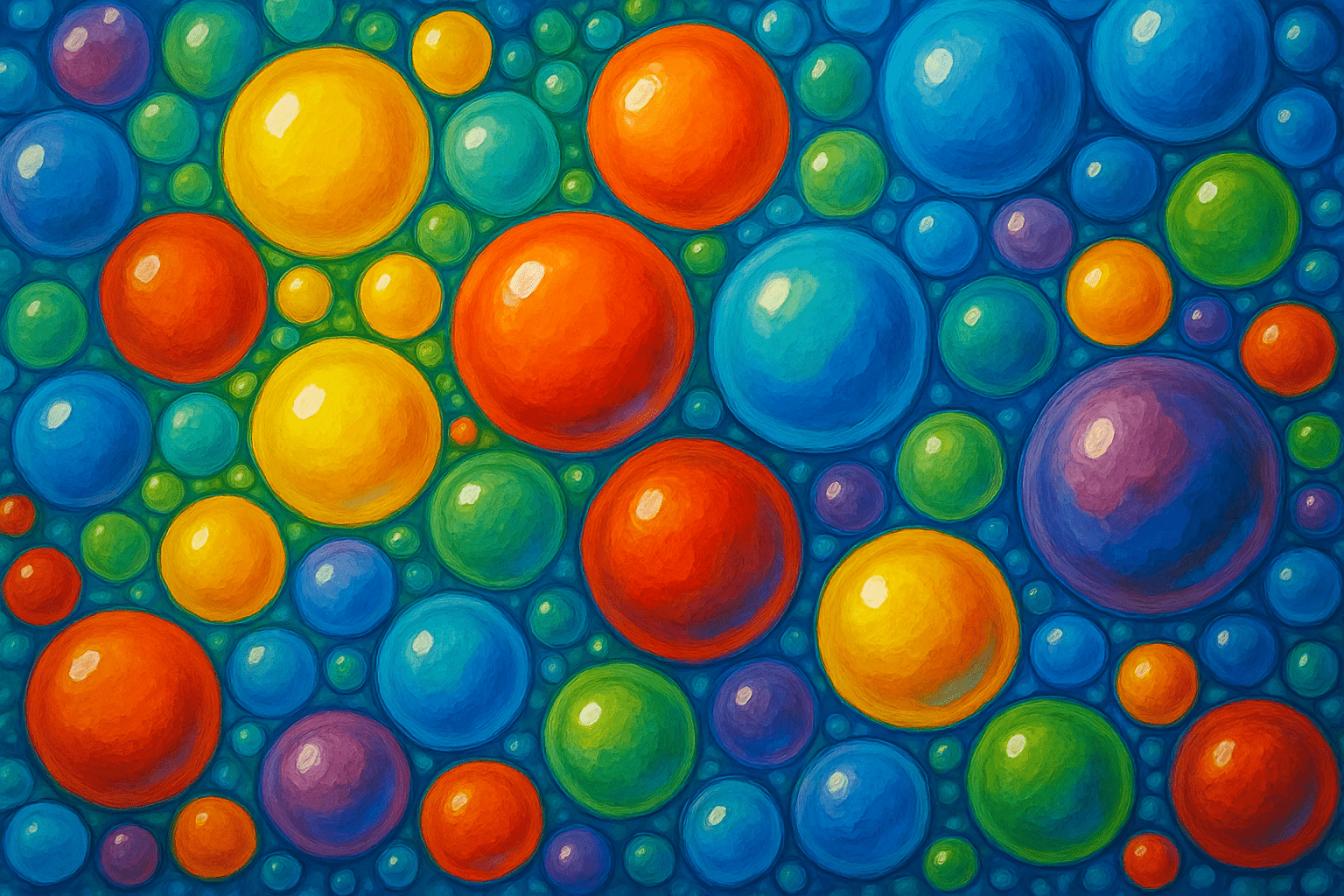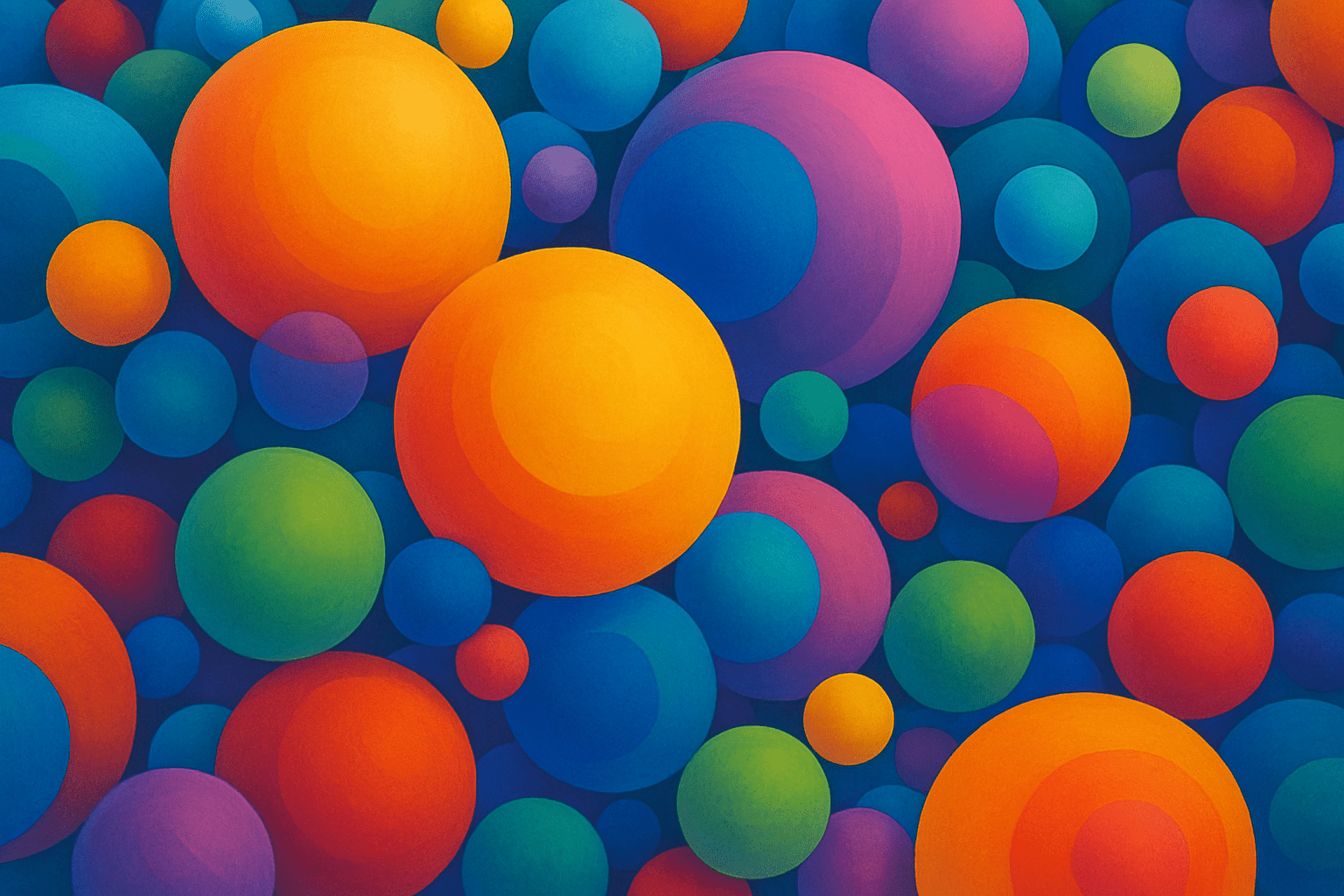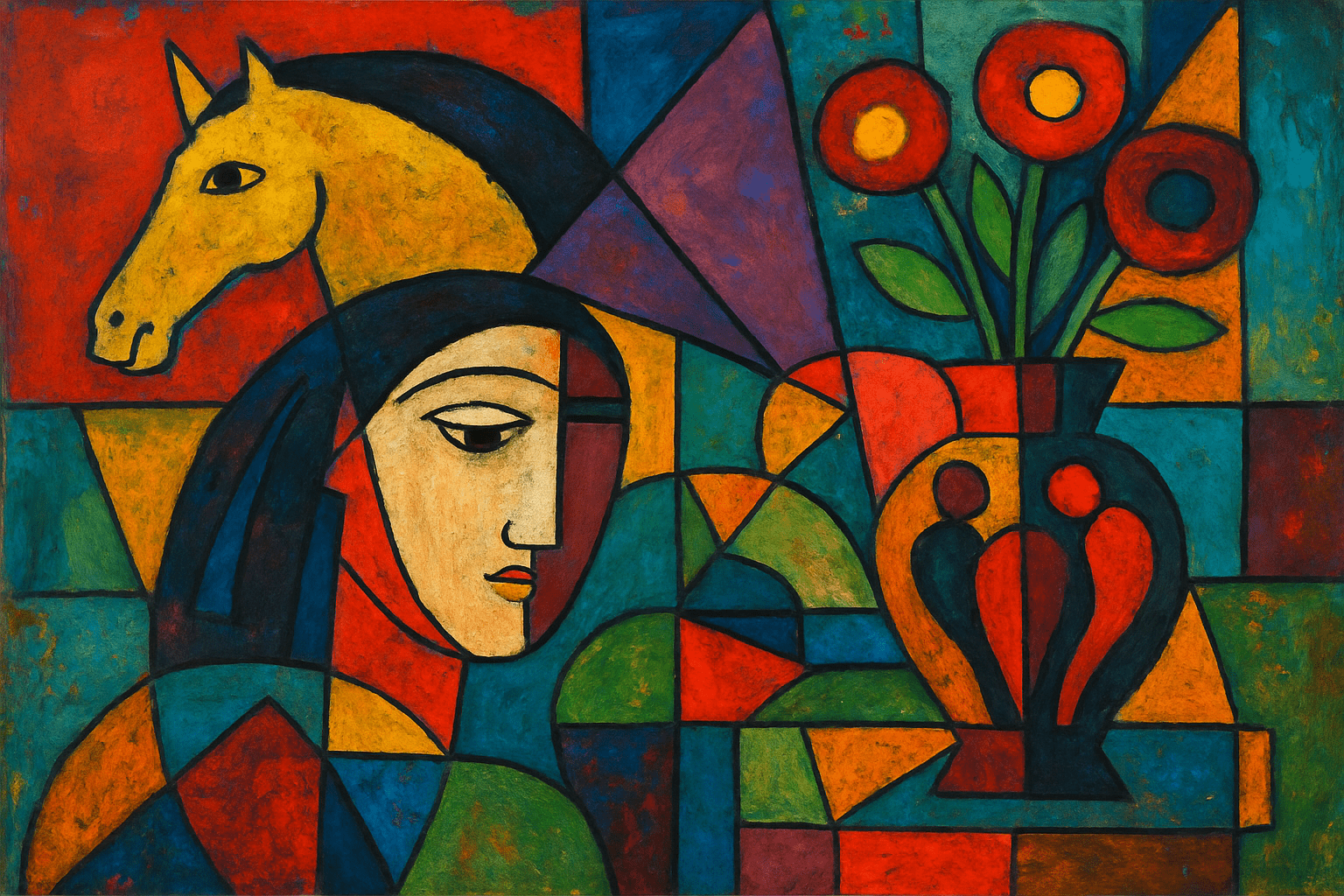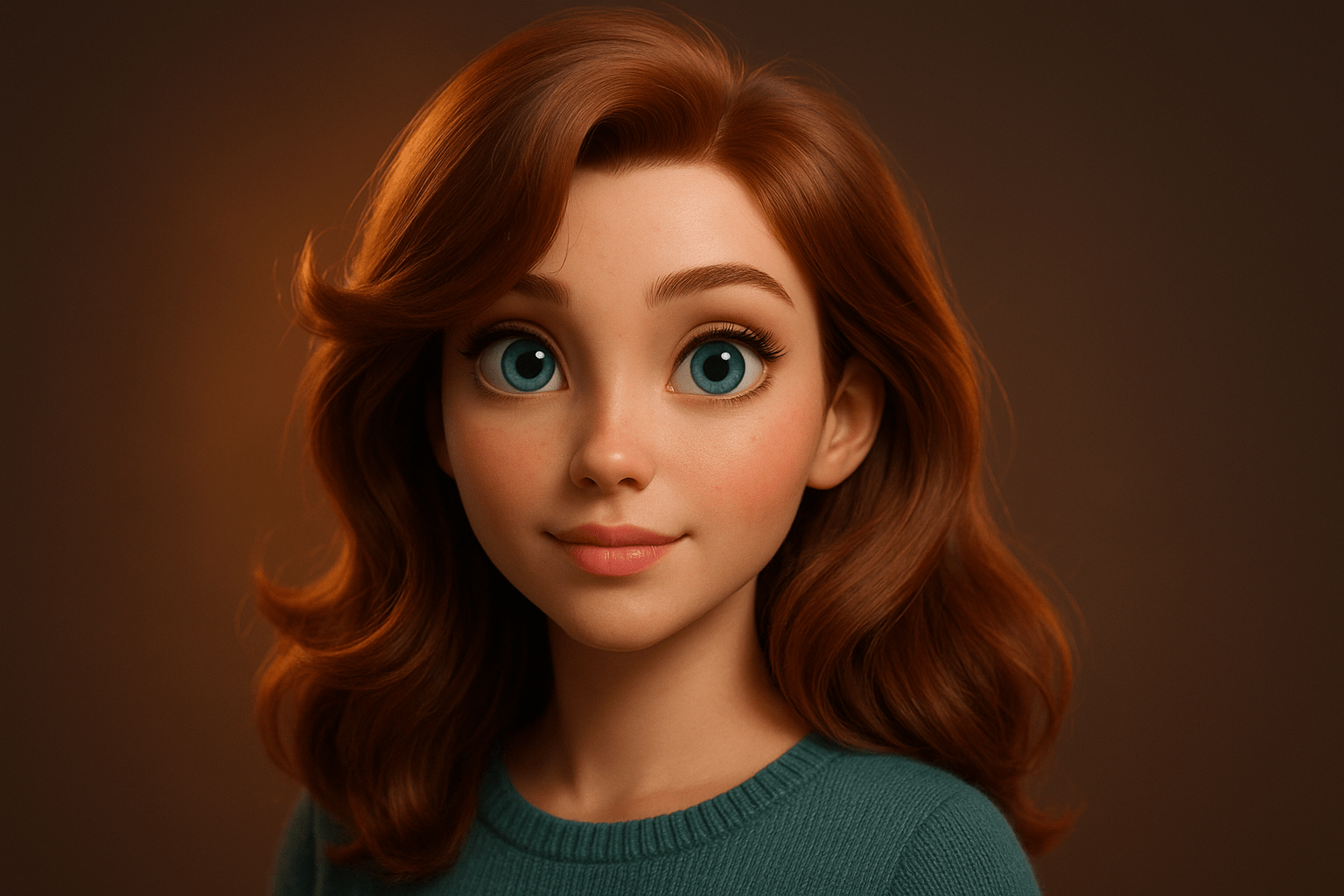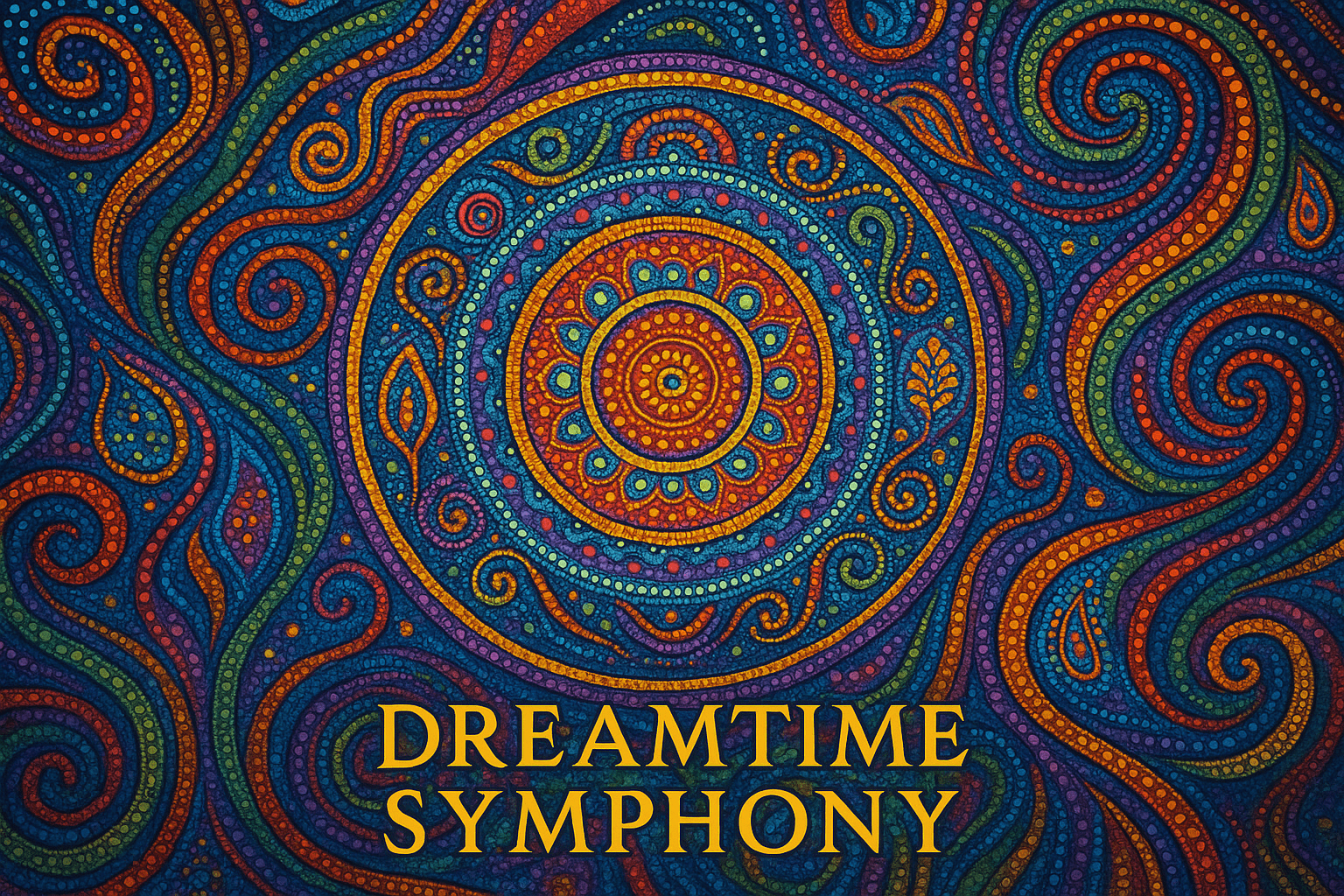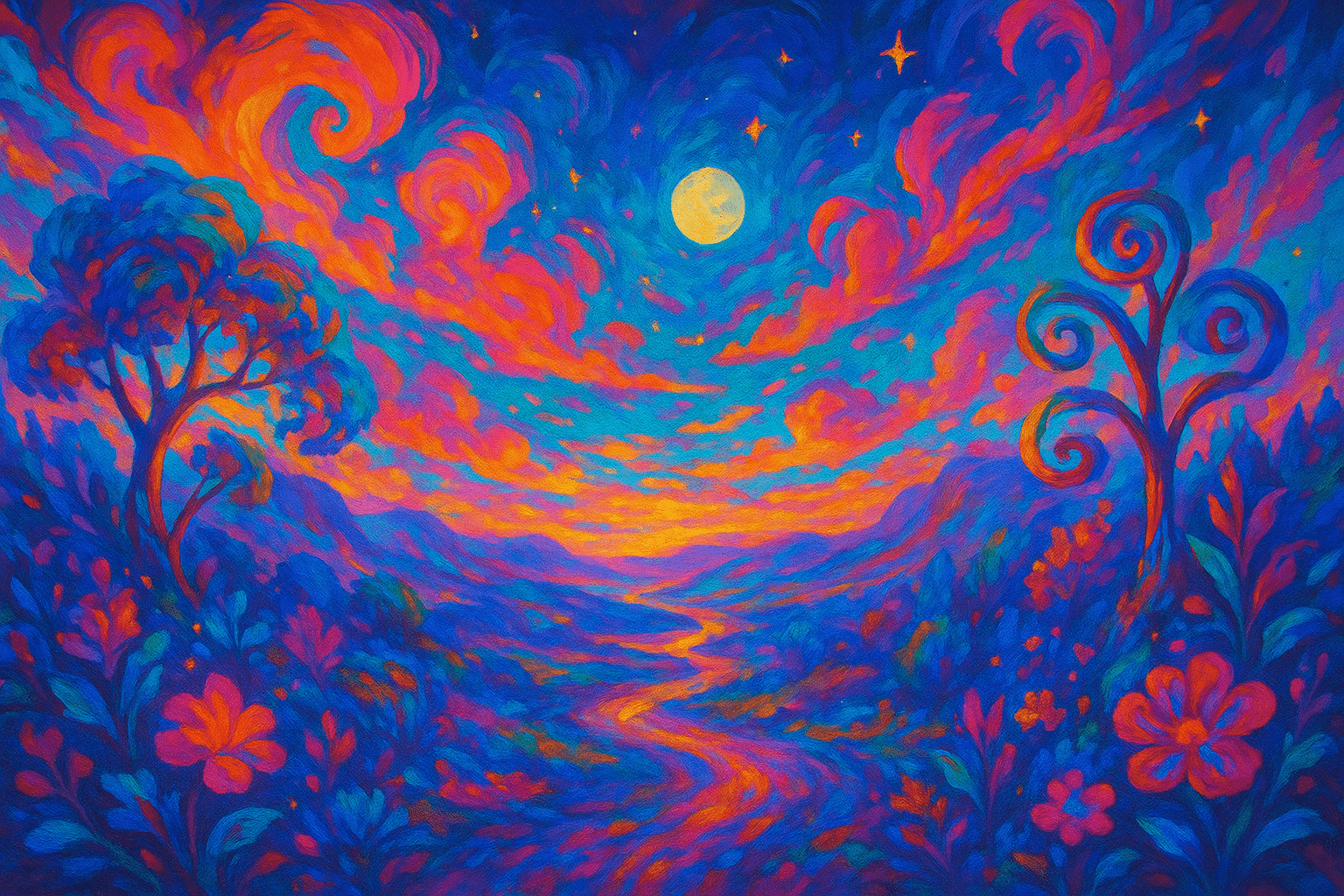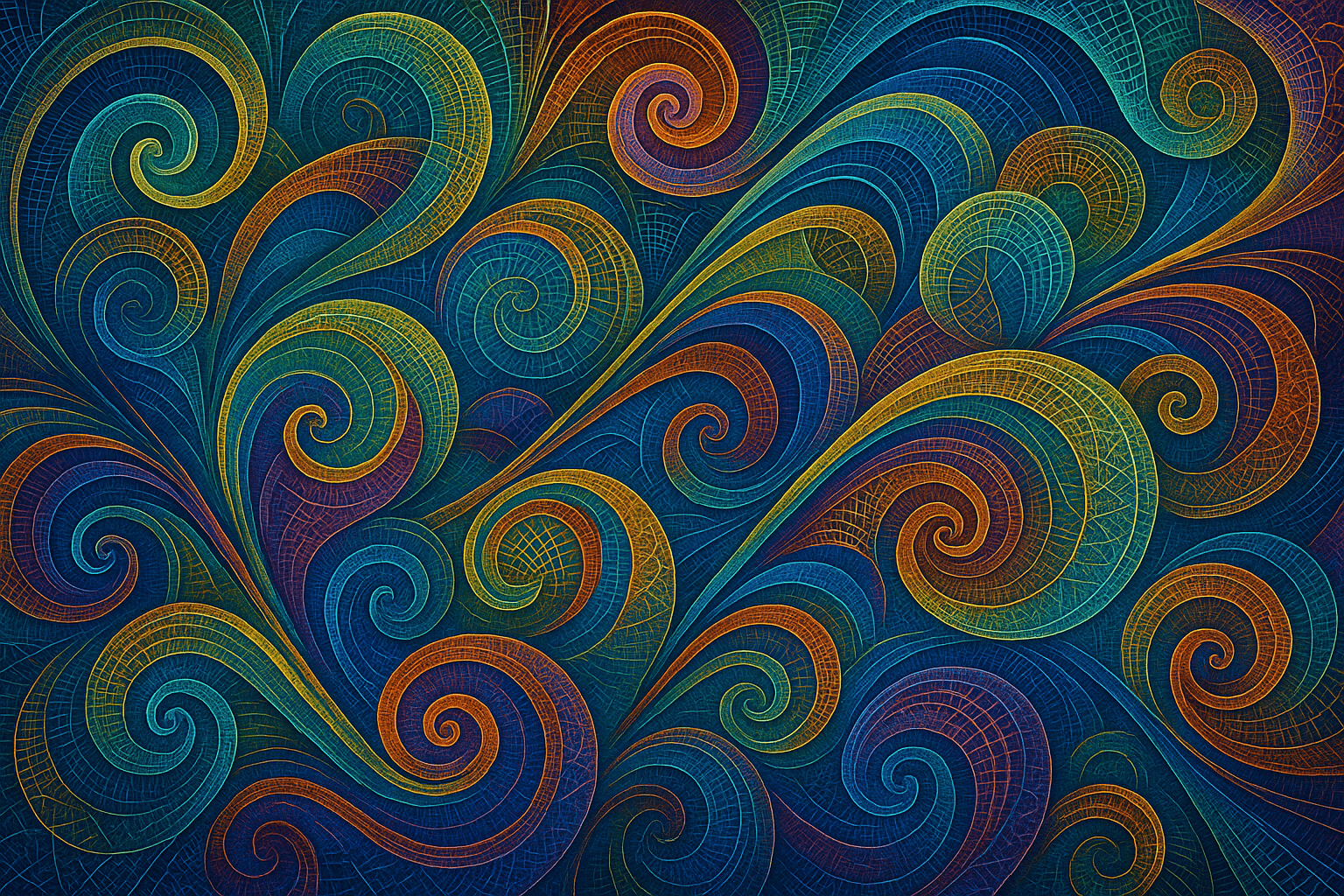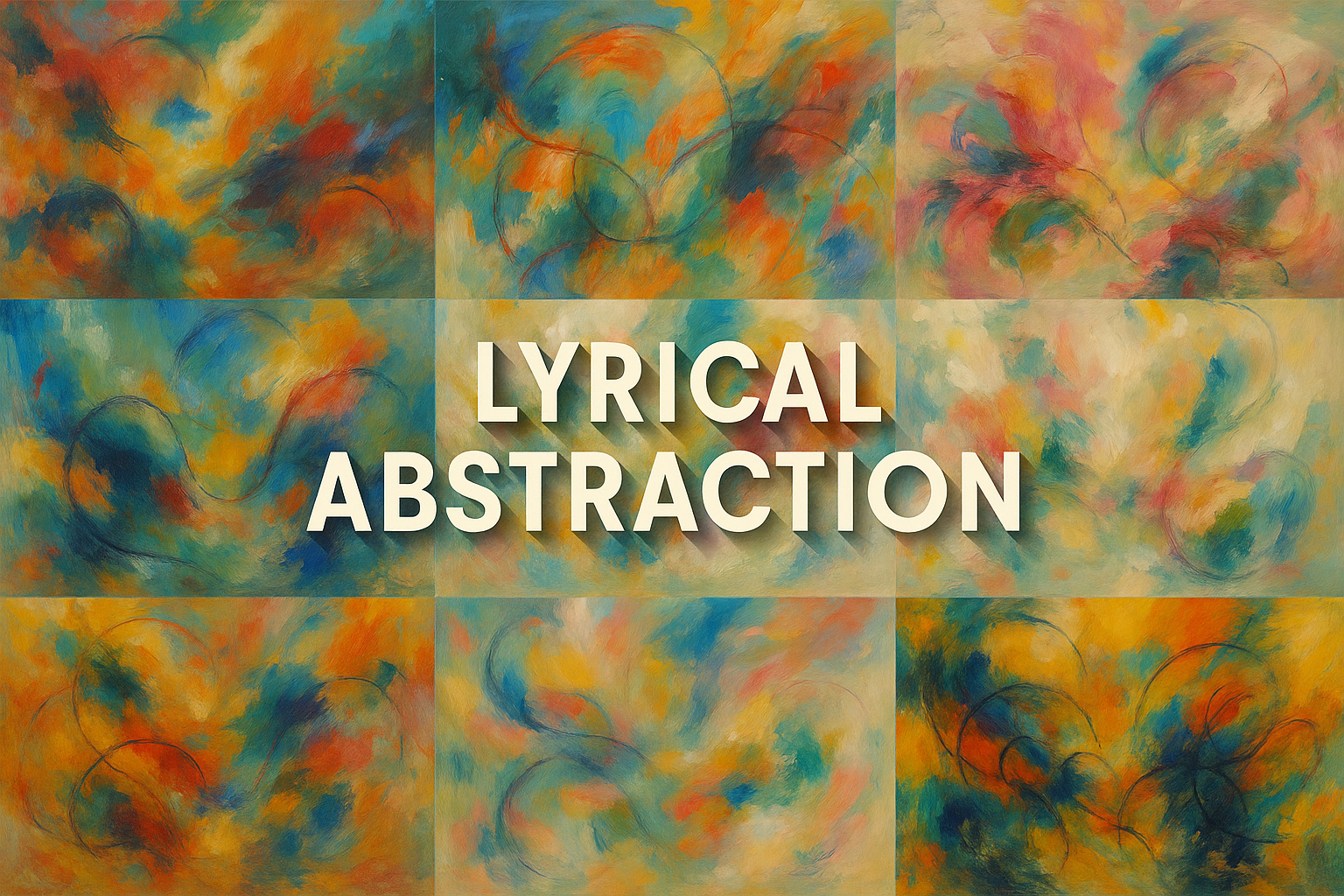
Lyrical Abstraction
Lyrical Abstraction is an art style characterized by its highly expressive and emotive qualities. The style is often associated with Abstract Expressionism, as both styles share similar characteristics. Lyrical Abstraction paintings are typically characterized by their loose, fluid brushwork, bold colors, and abstract forms. The overall effect of these elements is often one of energy and movement.
AOI thinking about Lyrical Abstraction [+_~]-/
Overview and Quickfacts
Lyrical Abstraction is a form of abstract art that is characterized by its highly expressive and emotive nature. It is often seen as a reaction against the more rigid and formal styles of abstract art that came before it. Lyrical Abstraction artists often use bold colors and fluid forms to convey their innermost feelings and ideas. The resulting artworks are often highly expressive and visually arresting.
Can understand it also, as:
Abstract art, non-representational art, non-objective art, non-figurative art
Categorize it as:
Impressionism, Modernism
.: Dreaming :.
holds a HAIKU for the art style
:. Thought is power .:
Detailed Description
Lyrical abstraction is a type of abstract art that is characterized by intense color and fluid forms. It is often associated with the work of French painters such as Joan MirÃÂó, Jean Dubuffet, and Georges Mathieu. Lyrical abstraction is often seen as a reaction against the formalism of geometric abstraction and the emotional coolness of minimalism. Instead, lyrical abstractionists sought to express their innermost feelings and emotions through their work. Famous artists who worked in the lyrical abstraction style include Jackson Pollock, Mark Rothko, Clyfford Still, and Barnett Newman. Some of the most famous paintings in this style are Pollock’s “Number 1, 1948” and Rothko’s “Untitled (Black on Maroon).”
.. beep, beep, beep ..
<START OF TRANSMISSION>
1. Lyrical Abstraction is a term first used to describe a type of abstract painting by French art critic Jean-Louis Vauxcelles in 1945. 2. It is characterized by its highly expressive, often emotional, brushwork and is often associated with Abstract Expressionism. 3. Lyrical Abstraction artists sought to express themselves through their paintings, rather than to communicate any specific message. 4. The movement began in the 1940s and reached its height in the 1950s. 5. Many of the leading exponents of Lyrical Abstraction were American painters who had studied in Europe, such as Jackson Pollock, Willem de Kooning, and Mark Rothko. 6. The style was also practiced by European artists such as Jean Dubuffet, Pierre Soulages, and Zao Wou-ki. 7. Lyrical Abstraction was partly a reaction against the non-objective approach of Abstract Expressionism. 8. While Abstract Expressionism tended to be more cerebral and concerned with the process of painting, Lyrical Abstraction was more intuitive and emotional. 9. Lyrical Abstraction artists often used bold colors and gestural brushstrokes to create dynamic and expressive paintings. 10. The style is sometimes seen as a precursor to Color Field painting and Post-Painterly Abstraction. 11. Lyrical Abstraction was also influenced by Surrealism, Cubism, and Expressionism. 12. Many of the artists associated with Lyrical Abstraction later moved away from the style, instead adopting a more minimal approach. 13. The term Lyrical Abstraction is sometimes used interchangeably with Abstract Expressionism, although the two styles are distinct. 14. Lyrical Abstraction should not be confused with Abstract Impressionism, another type of abstract painting that emerged in the 1950s. 15. Abstract Impressionism is characterized by its use of thin, delicate brushstrokes and muted colors, in contrast to the bolder and brighter style of Lyrical Abstraction. 16. While Lyrical Abstraction artists sought to express themselves through their paintings, Abstract Impressionists were more concerned with the act of painting itself. 17. Lyrical Abstraction reached the height of its popularity in the 1950s, but the style began to decline in the 1960s. 18. Many of the leading exponents of Lyrical Abstraction have since passed away, including Jackson Pollock, Willem de Kooning, and Mark Rothko. 19. The style has been revived in recent years by a new generation of artists, although it remains a relatively niche movement. 20. Lyrical Abstraction is sometimes seen as a more accessible type of abstract painting, due to its more expressive and emotional nature.
<EOF>
.. robbel bob
Visual Examples from our image gallery
Coming soon, we are so slow .. might never come
Artists, Paintings, and more
(be aware, can be highly speculative)
Artists (be aware, speculation possible):
1. Jackson Pollock (1912-1956) 2. Willem de Kooning (1904-1997) 3. Mark Rothko (1903-1970) 4. Clyfford Still (1904-1980) 5. Barnett Newman (1905-1970) 6. Adolph Gottlieb (1903-1974) 7. Hans Hofmann (1880-1966) 8. Robert Motherwell (1915-1991) 9. Richard Diebenkorn (1922-1993) 10. Joan Mitchell (1926-1992) 11. Sam Francis (1923-1994) 12. Helen Frankenthaler (1928-1997) 13. Philip Guston (1913-1980) 14. Franz Kline (1910-1962) 15. Lee Krasner (1908-1984) 16. Arshile Gorky (1904-1948) 17. David Smith (1906-1965) 18. Barnett Freedman (1901-1958) 19. Edward Hopper (1882-1967) 20. Georgia O’Keeffe (1887-1986) 21. Stuart Davis (1892-1964) 22. John Marin (1870-1953) 23. Marsden Hartley (1877-1943) 24. Charles Burchfield (1893-1967) 25. Thomas Hart Benton (1889-1975) 26. Andrew Wyeth (1917-2009) 27. James McNeill Whistler (1834-1903) 28. John Singleton Copley (1738-1815) 29. Gilbert Stuart (1755-1828) 30. Benjamin West (1738-1820)
Artworks (be aware, speculation possible)
1. “Musique” by Joan Miro (1961) 2. “The Red Studio” by Henri Matisse (1911) 3. “The Yellow Curtain” by Pablo Picasso (1922) 4. “The Blue Room” by Georges Braque (1908) 5. “The Green Stripe” by Henri Matisse (1905) 6. “The Black Square” by Kazimir Malevich (1915) 7. “Composition with Red, Yellow, and Blue” by Piet Mondrian (1921) 8. “The Red Horse” by Franz Marc (1911) 9. “The Yellow Christ” by Paul Gauguin (1889) 10. “The Red Vineyard” by Vincent van Gogh (1888) 11. “The Blue Nude” by Henri Matisse (1902) 12. “The Green Line” by Piet Mondrian (1905) 13. “The Black Circle” by Kazimir Malevich (1913) 14. “Composition with Blue and Yellow” by Piet Mondrian (1930) 15. “The Red Balloon” by Paul Klee (1922) 16. “The Yellow Boat” by Wassily Kandinsky (1908) 17. “The Blue Rider” by Franz Marc (1903) 18. “The Green Table” by Piet Mondrian (1942) 19. “The Black Square on a White Ground” by Kazimir Malevich (1923) 20. “Composition with Red, Blue, and Yellow” by Piet Mondrian (1930) 21. “The Red Sun” by Paul Klee (1926) 22. “The Yellow House” by Vincent van Gogh (1888) 23. “The Blue House” by Wassily Kandinsky (1908) 24. “The Green Tree” by Wassily Kandinsky (1910) 25. “The Black Mountain” by Franz Marc (1908) 26. “Composition with Blue and Yellow” by Piet Mondrian (1930) 27. “The Red Sea” by Wassily Kandinsky (1909) 28. “The Yellow Boat” by Wassily Kandinsky (1908) 29. “The Blue Rider” by Franz Marc (1903) 30. “The Green Table” by Piet Mondrian (1942)
Epoch
The time period of the art style Lyrical Abstraction is from the 1940s to the present.
AI ART RESSOURCES (AKA, well Tools)
Helping tools -> predefined search links on other pages:
